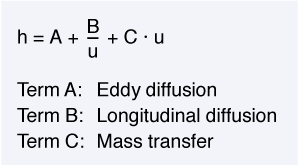CORE-SHELL PHASES – HIGHEST EFFICIENCY FOR ALL HPLC INSTRUMENTS
In the past years, manufacturers of HPLC columns and instruments have made different efforts to develop products with high separation efficiency combined with shorter 
Modern core-shell technology also meets this demand for high resolution and short analysis at moderate pressures.
While a reduction in particle size of totally porous silicas down to sub-2 µm particles results in a distinct shortening of analysis time, the column backpressure sometimes may increase up to 1000 bar, necessitating the costly acquisition of ultra-high pressure LC instrumentation. While monolithic phases enable the required decrease in analysis times on conventional instruments at low pressures, they do not reach the separation efficiency of sub-2 µm particles.
Since the requirements of HPLC separations with respect to the highest efficiency have not yet been met, further optimizations were necessary.
OPTIMIZATION OF HPLC PARTICLES
In order to increase the efficiency of HPLC columns with respect to higher resolution and shorter analysis times, a higher plate number N, i.e. a lower plate height h at high linear velocity u is required.

Lower plate heights at high flow rates are achieved with sub-2 µm particles. Terms A and C of the van Deemter equation are functions of the particle diameter. Thus for smaller particles, the plate height will be lower. However, the resulting high column back pressures up to 1000 bar place high requirements on LC instrumentation.
Conventional HPLC systems are not designed for such pressures. Very high linear velocities at pressures of only 100 bar are obtained with monolithic silica columns. However, their plate height is approximately comparable with 3 µm porous silicas, only. In addition, they show disadvantages with respect to loading capacity.
Consequently, the aim of further optimization of HPLC particles is to reconcile the advantages of high flow rates with moderate pressure and high resolution. State-of-the-art core-shell technology meets this demand by using silica, which is not fully porous.


